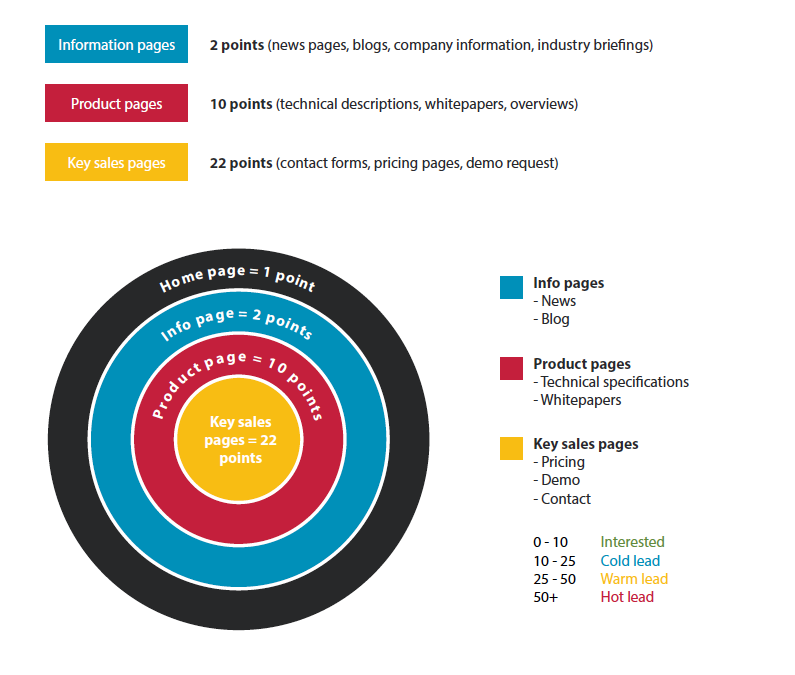The Art of Page Scoring
Knowing who is on your website is good… but it’s no longer enough. Based on pages viewed over time, you can get much greater insights into where organisations are in the buying cycle, and tailor the way you engage with them – likely to result in a better customer experience and better conversion rates.

The internet has forever changed the way individuals and businesses buy goods and services. A large proportion of the buying cycle is now done online, without the knowledge of the selling company. With technology like Web Insights for example, you have the opportunity to know ‘Who is on When’, ‘Who is on Where’ and ‘Who is interested in What’.
The methodology for page scoring is built on the basis that content on different pages on your site fits into different categories. And the regular (or not) interaction with your content gives valuable signals on what stage the visiting company is in the buying cycle.
In effect, some pages on your website are better than others at indicating visitor buying behavior signals. We recommend that you score on a per-page basis. Just to illustrate, you may want a “Book a demo’ page or a visit to your pricing page to score 50 points. Alternatively, you may want to take points off for visits to your careers page.
So how do you score pages?
First of all, you need to establish different page types. To give you an example, here is how we do it at Workbooks.
By monitoring activity over time on different page types – and by monitoring an individual’s or companies overall score – we can begin to forecast where we believe organisations are in their buying cycle.
Grouping the leads
Now we have a series of companies who are being profiled, we need a set of criteria on how to view who to engage with and how. This can be simply done by aggregating a score per account.

Instead of discarding your website visitors because they don’t immediately behave in a sales-ready manner (i.e. call you, or fill in a form, or click the contact us), you can see where they are within the buying cycle (based on the page scoring methodology). You can even start nurturing them to potentially grow them into ‘hot’ leads using a lead nurturing programme. Such an approach usually produces more closed deals and revenue growth compared to traditional methods.
By implementing page scoring correctly you’ll start seeing high-quality leads appear. You’ll be able to better tailor your marketing and sales approach, drive your sales cycle more efficiently, gain greater insights, make better decisions, increase conversion and grow revenue.